Transition to NextGen WaterAlert NOW
From now until September 30th, 2022, current users of WaterAlert will be able to take 3 simple steps to transfer their alerts to the Next Generation system. Users will receive an email with a unique link to the transition page for their specific alerts. We anticipate this process taking 5 minutes or less for most users.
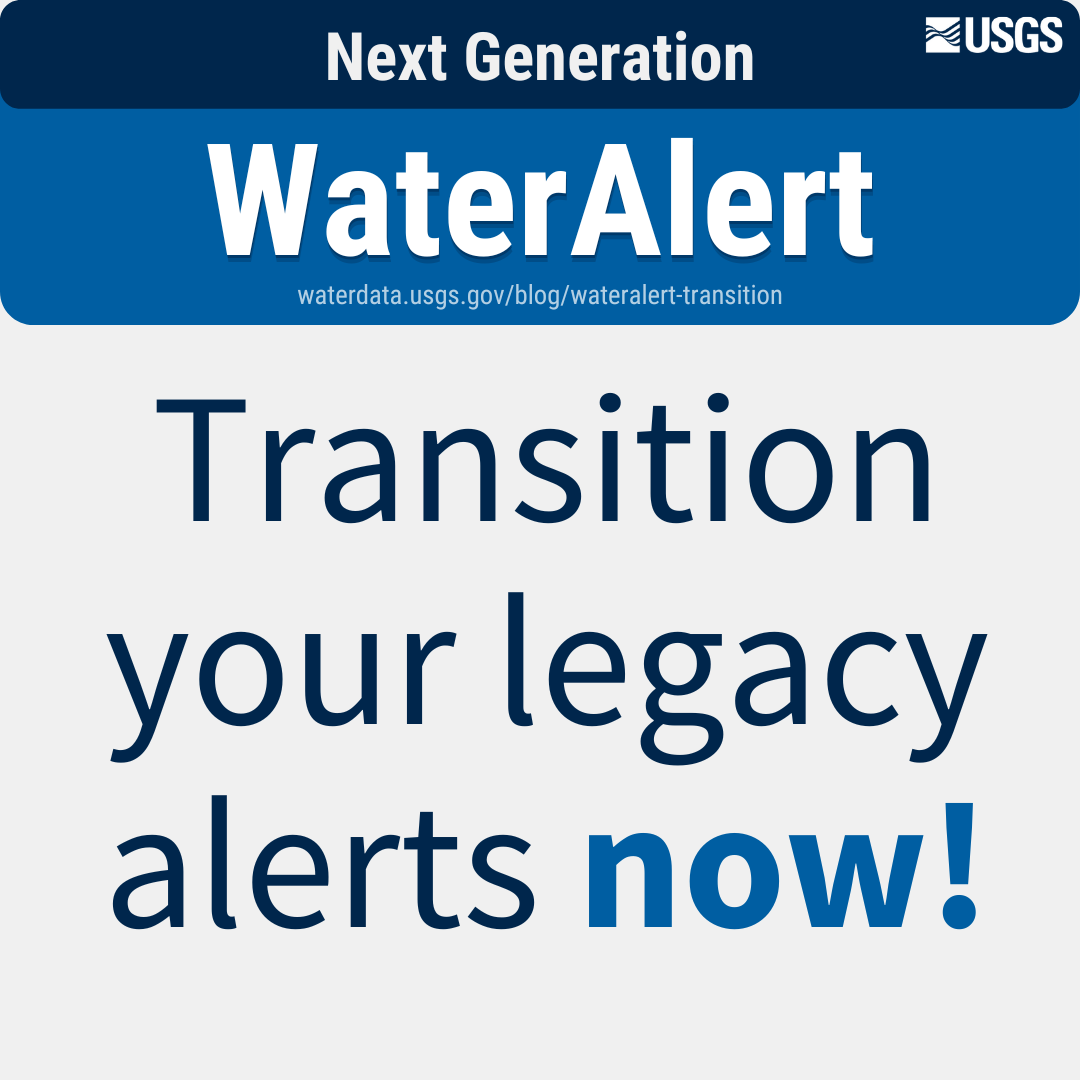
The transition opens today, August 22nd, 2022 and will close on September 30th, 2022.
| Date | What Will Happen |
|---|---|
| August 2022 | Next Generation WaterAlert is available |
| August 22nd, 2022 | Transition period opens |
| September 30th, 2022 | Transition period closes |
| October 1st, 2022 | Legacy WaterAlert is Decomissioned |
📩 Check your email!
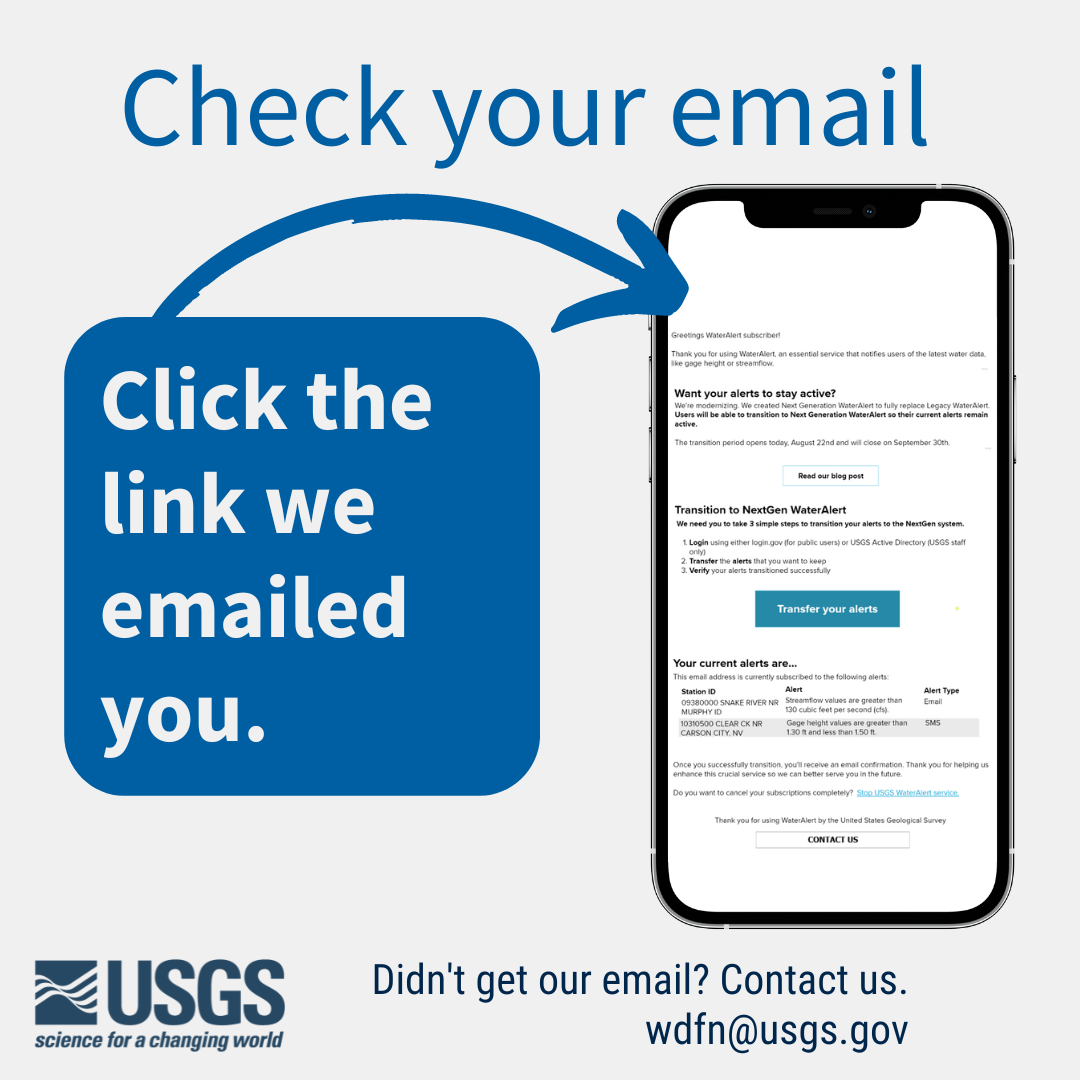
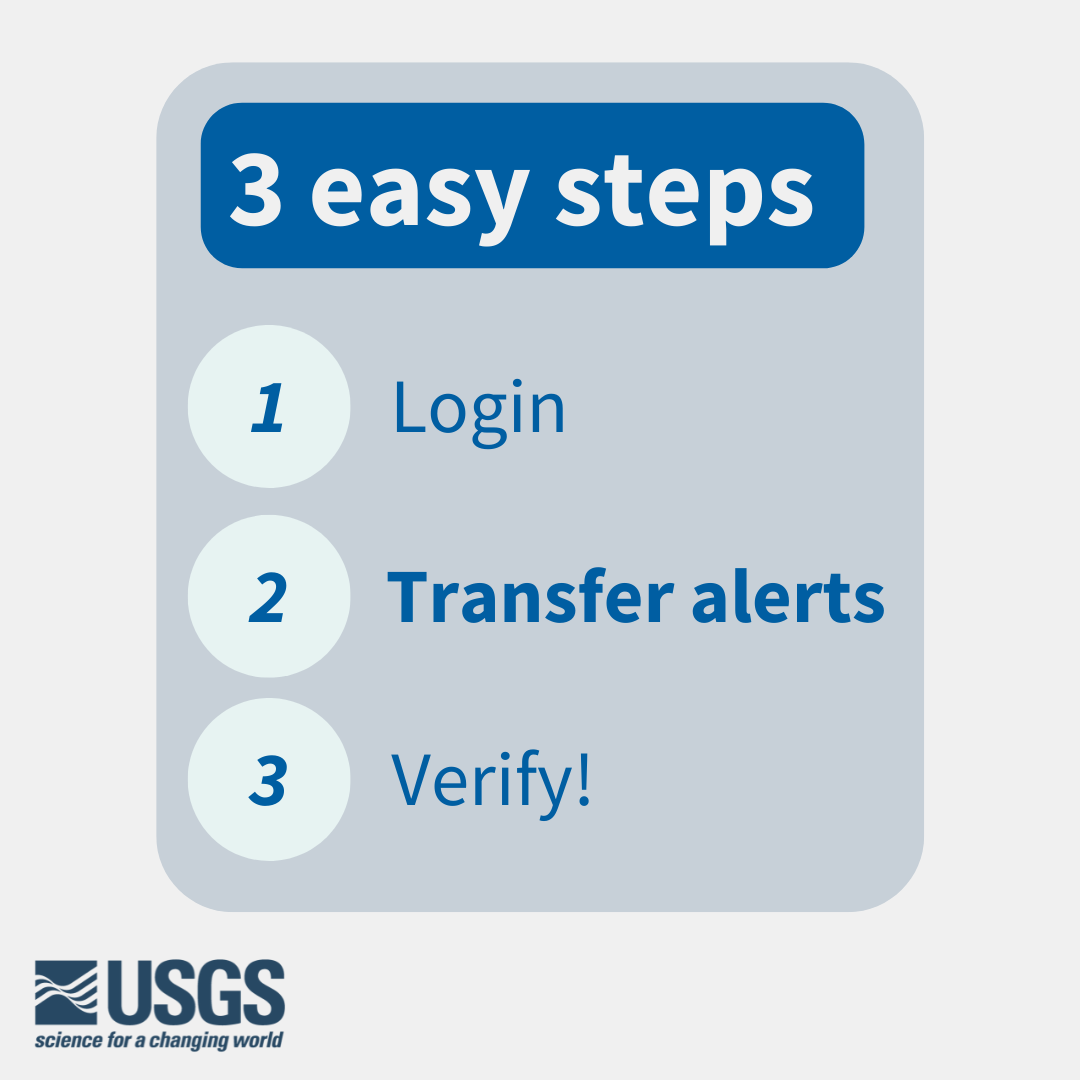
Users will take 3 simple steps to transition to NextGen WaterAlert: login, transfer alerts, verify they’re all there, and you’re done!
Step 1: Login
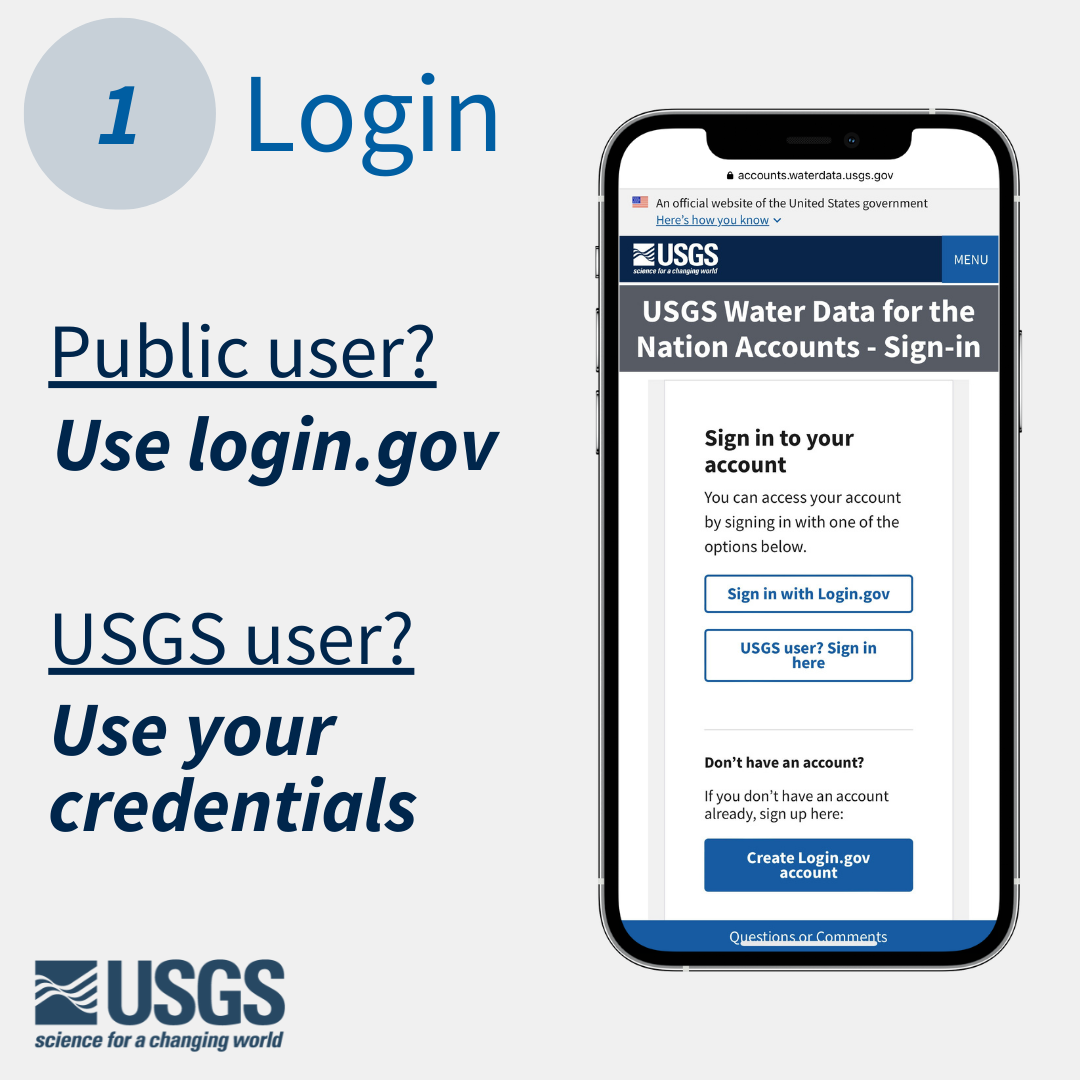
Public users will use login.gov , the public’s one account for government services. If you don’t have a login.gov account, it takes only a few minutes and 3 pieces of information to create an account . You’ll need your email address, a secure password, and one or more authentication methods.
USGS users will use their active directory credentials to seamlessly login to WaterAlert with one click.
Step 2: Transfer alerts
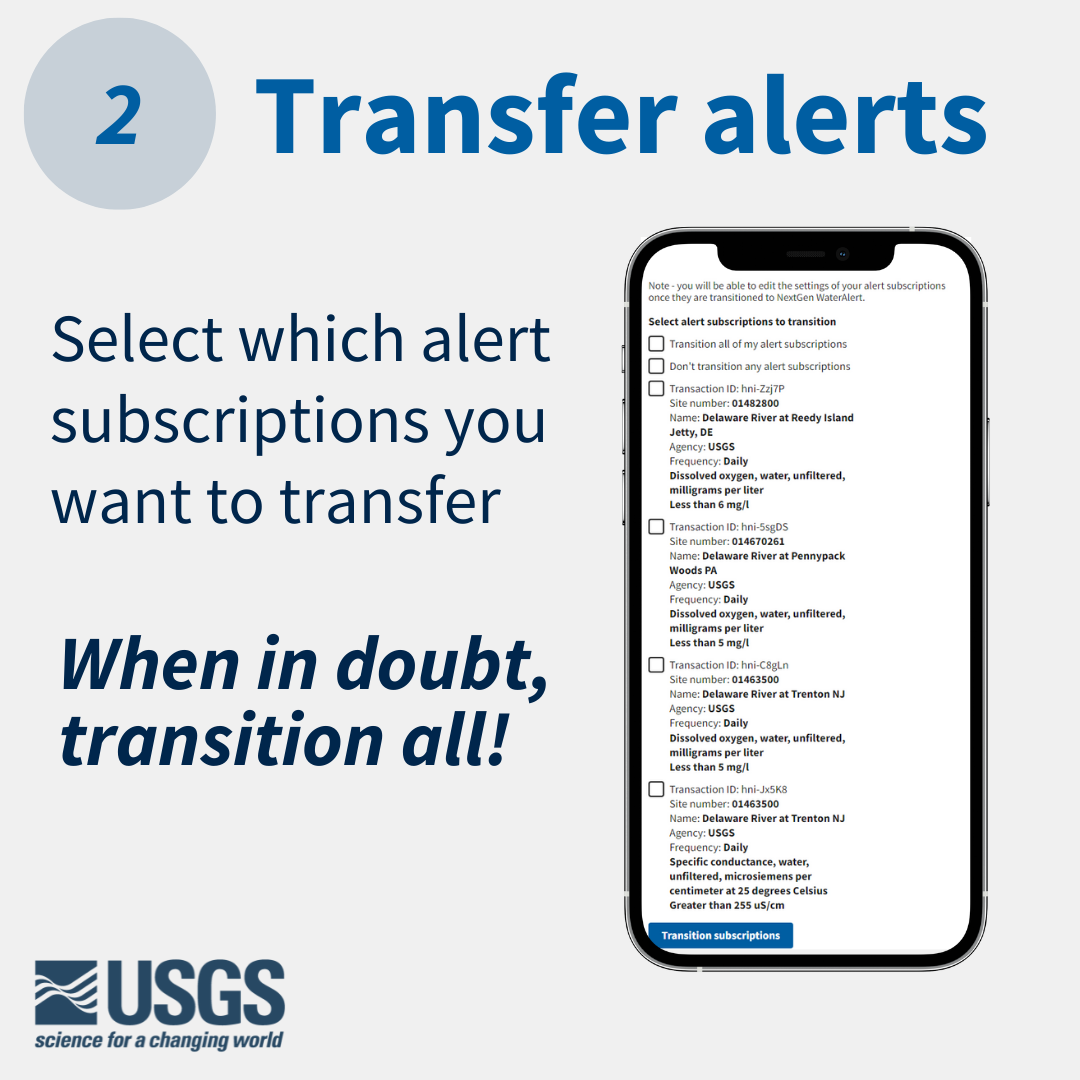
Choose which alerts to transfer to NextGen WaterAlert. When in doubt, select all since you won’t be able to return to this transition page.
Step 3: Verify
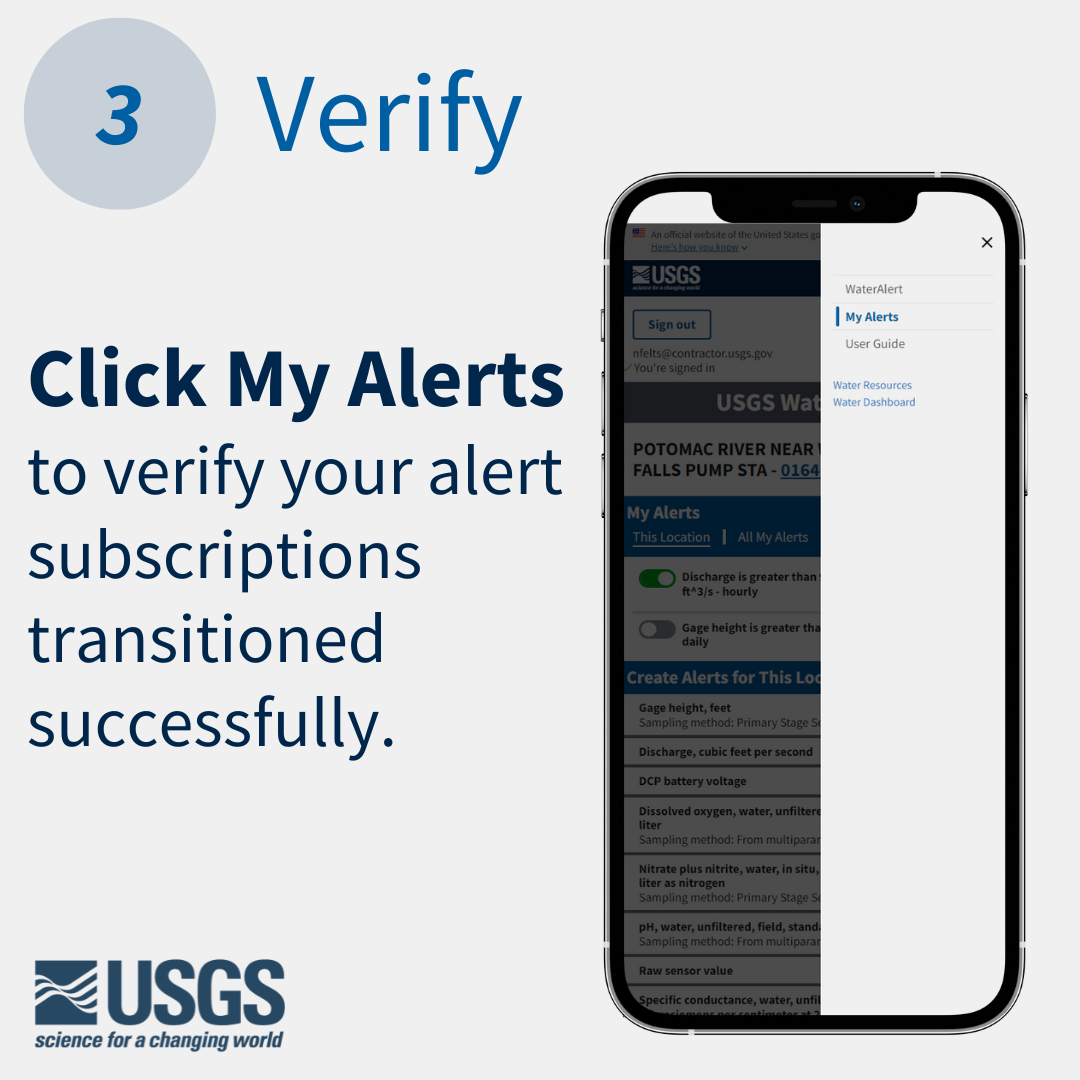
You’re all done. Click My Alerts to verify that your alerts transitioned successfully. From here, you can edit, delete, and pause existing alerts, and create new alerts.
🆘 Need help?
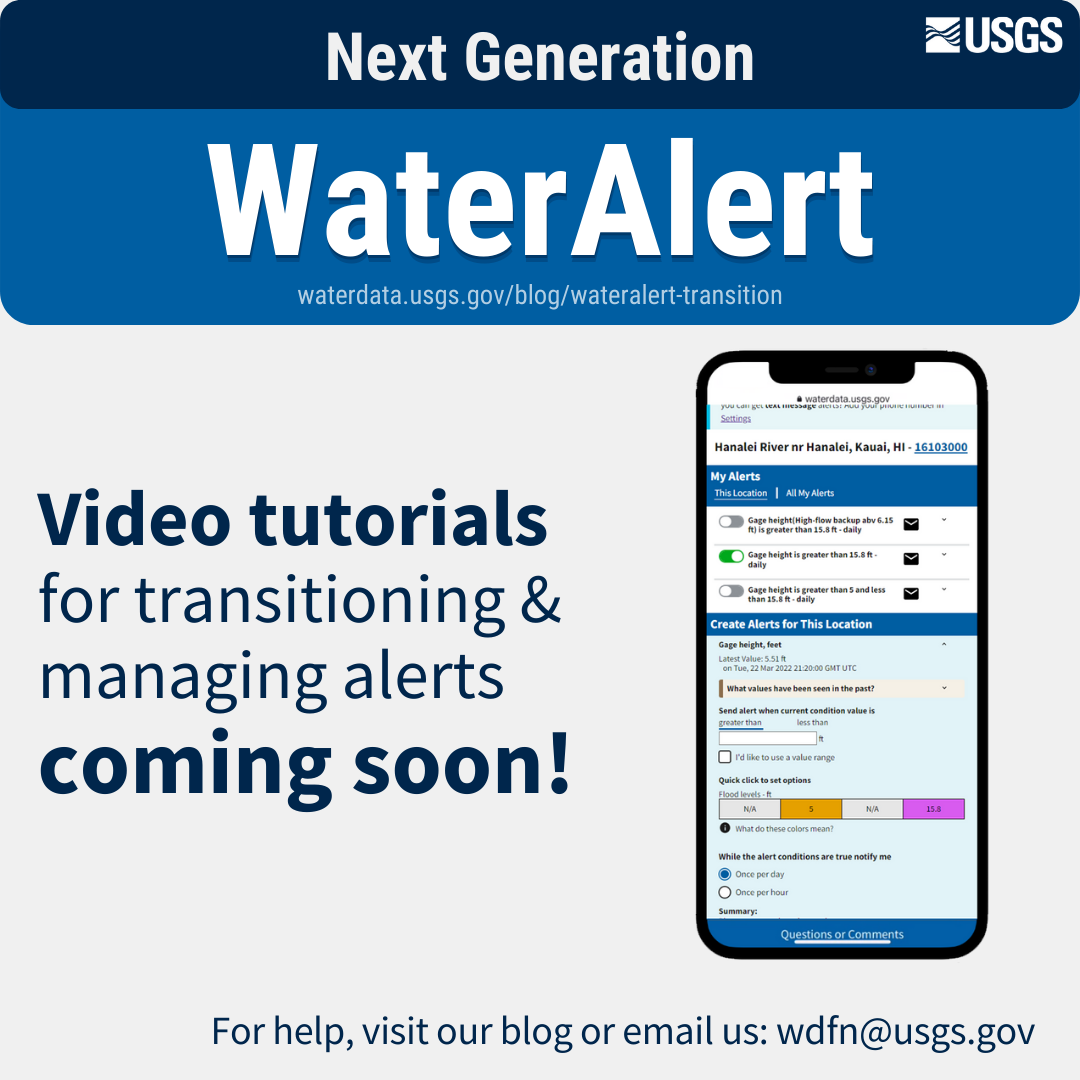
We’re happy to help. 📧 Email us at any time: wdfn@usgs.gov . Contact us with questions, concerns, or requests for help.
🙌 With Water Data for the Nation, the USGS is making high-quality water information discoverable, accessible, and usable for everyone.
Categories:
Keywords:
Related Posts
Next Generation WaterAlert | Steps to Transition
April 11, 2022
See our most recent blog post on WaterAlert. Last updated July 29th, 2022 at 16:00 ET We're Modernizing WaterAlert Starting in summer* 2022, expect to hear from us by email or text about transitioning your legacy alerts to Next Generation WaterAlert , which will go live in fall* 2022.
NextGen WaterAlert is out!
October 18, 2022
Our team is pleased to announce that the transition from Legacy WaterAlert to NextGen WaterAlert is complete! Access NextGen WaterAlert now ! WaterAlert is a near real-time hydrologic alerting system.
Redirecting the Next Generation Monitoring Location Pages
October 14, 2022
During the week of October 17th, many links to legacy real-time pages will be redirected to the Next Generation monitoring location pages. This means that bookmarked links to the legacy real-time pages will be redirected automatically to the NextGen monitoring location pages.
WDFN Quarterly Newsletter
May 24, 2022
Did you know that we have a quarterly newsletter? Check out our latest edition! Screenshot of the beginning of our Spring 2022 WDFN Newsletter .
Next Generation Monitoring Location Pages Update
May 6, 2022
Last updated August 12th, 2022 On April 11th, we hosted a public webinar during which we updated our stakeholders on the progress of replacing Legacy real-time pages with Next Generation Monitoring Location Pages .

